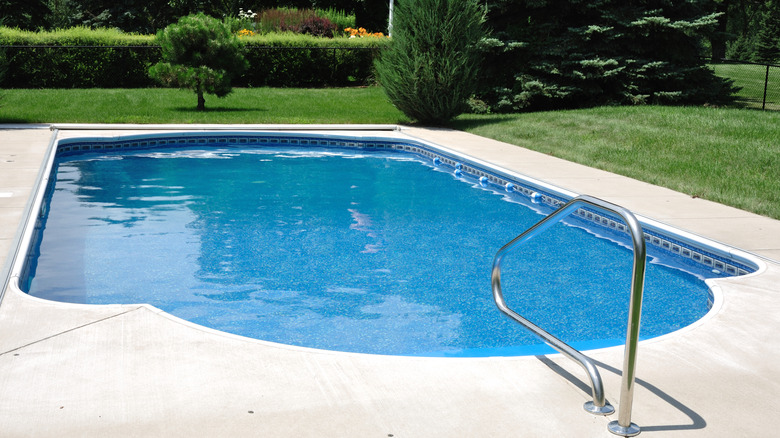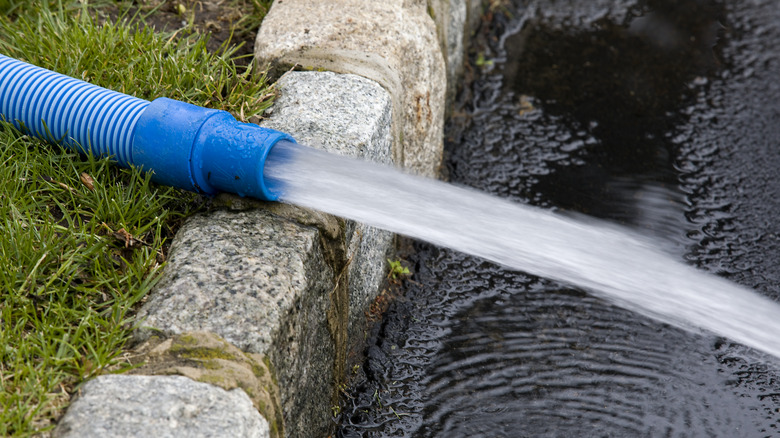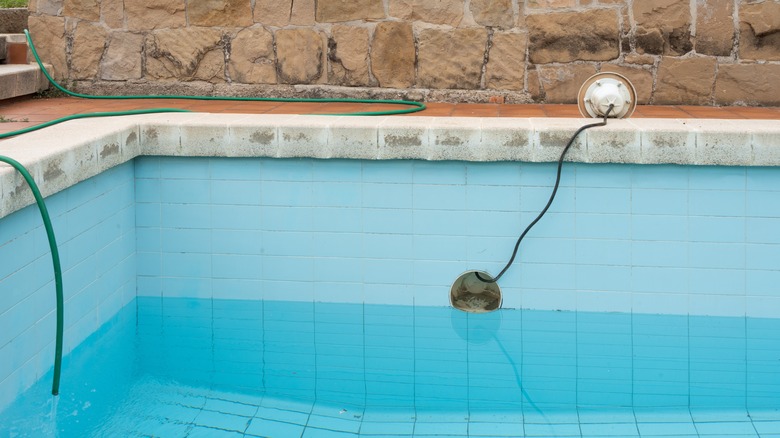How To Prevent Your Pool From Popping Out Of The Ground When Draining It
A popped pool can occur when pressure from groundwater becomes greater than the weight of an empty pool. This generally happens when draining an inground pool without proper precautions, and will cause the entire structure to lift out of the ground. There are a few different types of inground pools, and some are more vulnerable than others, but any inground pool has the potential to pop. The damage could be very costly, often requiring an entire replacement and landscaping repairs.
Pool-popping is caused by hydrostatic pressure coming from the groundwater around your pool pushing it outward. This problem is increased if your pool was installed incorrectly or if you're having drainage issues. However, even a properly installed pool isn't immune, as groundwater can rise unexpectedly due to heavy rainfall, broken water mains, or nearby construction. Recognizing the risks is the best first step in prevention, and with some proper planning, you'll be able to safely drain your pool without the risk of costly damage.
Draining your pool safely
The most reliable method to help prevent a pool from popping is monitoring the water level before draining. Use a sump pit or a wellpoint system, usually drilled near the pool's deep end, to check levels. If the water level is too high, there could be too much pressure, and you'll want to wait. It's very important to know exactly how to drain your inground pool and whenever you do, try to keep 12 to 18 inches of water to help provide a counterweight. Also, avoid draining after a heavy rain when groundwater is at its highest.
Different types of pools will require specific approaches when it comes to draining. For most pools, not draining them all the way is almost always safer than a complete emptying. You could try adding large plastic trash bins to the bottom of the pool when it's full, so as you drain they will help add pressure to the bottom. Concrete pools are obviously the heaviest but still need precautions, as their porous nature can absorb groundwater when empty, leading to cracks. Regardless of the material though, drain your pool slowly. This allows time for the groundwater to equalize and gives you a backup plan to refill your pool quickly if you start to notice any lifting during a drain.
Extra pool protection for peace of mind
There are permanent prevention systems available when draining a pool that will monitor possible risks year-round. Hydrostatic pressure relief plugs installed in the main drain can help automatically release groundwater pressure. You could also install a sump pump or anchoring system, which can be expensive but helps prevent major pool-popping issues.
It's always good to keep regular maintenance up as well. Make sure any surrounding drains are clear of debris so rainwater flows away from the pool area. Check for cracks around that might be allowing water to build up next to your pool and keep an eye on the pool liner to see if you need a new one. If you need to leave your pool empty for long periods of time, professional monitoring with water-level sensors provides an extra layer of safety and security. While no method is 100% perfect, knowing the risks and being proactive when draining will help you maintain your pool with confidence.


